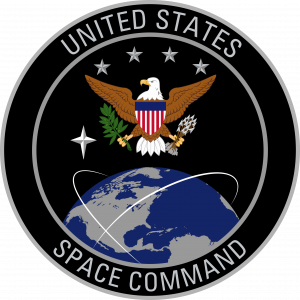The United States Space Command announced on December 16 that Russia has conducted a test of a direct-ascent anti-satellite (ASAT) missile. A statement issued by the command has Commander General James Dickinson saying, “Russia publicly claims it is working to prevent the transformation of outer space into a battlefield, yet at the same time Moscow continues to weaponize space by developing and fielding on-orbit and ground-based capabilities that seek to exploit U.S. reliance on space-based systems.”
Russia had previously conducted two ASAT tests and maneuvers earlier this year. In February, according to the U.S. Space Command, two Russian COSMOS satellites “which behaved similar to previous Russian satellites that exhibited characteristics of a space weapon, conducted maneuvers near a U.S. Government satellite that would be interpreted as irresponsible and potentially threatening in any other domain.” Russia also tested a direct-ascent one in April.
A direct-ascent ASAT is ground-launched. A co-orbital ASAT, on the hand, is space-based, in an orbit similar to the target which it can acquire after it receives an order remotely. But, such co-orbital ASATs have a dual use in that they can also be used for space situational awareness (SSA) activities. A Secure World Foundation report last year noted that Russia’s space based ASAT program “Burevestnik,” active since 2011, consists of four COSMOS satellites that are designed to provide the country SSA capabilities but “may play a supporting role for other counterspace weapons.” These findings that were corroborated in a different report produced by Center for Strategic and International Studies. (BreakingDefense has a nice summary of both reports here.)
“Russia’s persistent testing of these systems demonstrates threats to U.S. and allied space systems are rapidly advancing. The establishment of U.S. Space Command as the nation’s unified combatant command for space and U.S. Space Force as the primary branch of the U.S. Armed Forces that presents space combat and combat support capabilities to U.S. Space Command could not have been timelier. We stand ready and committed to deter aggression and defend our Nation and our allies from hostile acts in space,” Dickinson added in the Space Command statement on the latest Russian ASAT test.
As I have previously noted, the language in the new U.S. National Space Policy, released on December 9, when it comes to U.S. space deterrence and defense is much sharper from the one before it, released in 2010 by the Obama administration. The Trump policy notes: “Any purposeful interference with or an attack upon the space systems of the United States or its allies that directly affects national rights will be met with a deliberate response at a time, place, manner, and domain of our choosing [emphasis added].” Explaining the significance of this phrasing, I had written:
The addition of “directly” affecting “national rights” seem to suggest a principle — more focused and expansive at once — of what would merit retaliatory military action; focused and narrow, because unlike the Obama NSP, this suggests that the redlines for the same, direct threats to national rights as enunciated, are clear. But it is the promise of retaliation in a domain of the United States’ choice that truly situates space as “fifth domain” for the military. It is consistent with principles that have so far been advanced for other domains, such as reserving the right to respond to an attack in one domain in another, for example by meeting a cyber-attack on critical infrastructure through a kinetic strike.
This sharpening of doctrine follows from growing counterspace capabilities of U.S. adversaries.
The race for ASAT capabilities is expanding. In March last year, India became the fourth county in the world – after the U.S., Russia, and China – to demonstrate an ASAT capability after it tested a direct-ascent “hit to kill” missile against one of its satellites. Experts claim that further ASAT tests of this kind contribute to significant space debris, rendering the operating environment for others hazardous.

































